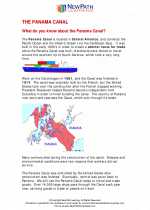Vermont: The Green Mountain State
Vermont is a state located in the New England region of the northeastern United States. It is known for its picturesque landscapes, covered bridges, and maple syrup production. Let's explore some key aspects of Vermont's history, geography, economy, and culture.
History of Vermont
Vermont was originally inhabited by Indigenous peoples, including the Abenaki and Mohican tribes. It was explored by French and English colonists in the 17th century and was settled by the British in the 18th century. Vermont declared its independence from New York and New Hampshire in 1777 and became the 14th state to join the United States in 1791.
Geography
Vermont is characterized by its green mountains, which give the state its nickname, "The Green Mountain State." The state is known for its natural beauty, including forests, lakes, and rivers. Its highest peak is Mount Mansfield, and Lake Champlain forms part of its western border with New York.
Economy
Agriculture, particularly dairy farming, has historically been a significant part of Vermont's economy. The state is also known for its production of maple syrup, which is a major industry. Additionally, tourism plays a crucial role in Vermont's economy, with visitors drawn to its outdoor recreational activities, scenic drives, and historic sites.
Culture
Vermont has a rich cultural heritage, with influences from its early European settlers and Indigenous peoples. The state is known for its vibrant arts and crafts scene, including traditional crafts such as pottery, weaving, and folk art. Vermont also has a strong tradition of local food and drink, including artisanal cheeses and craft beer.
Study Guide
- What is Vermont's nickname, and how did it originate?
- Who were the Indigenous peoples that originally inhabited Vermont?
- When did Vermont become a state, and what number state was it in the United States?
- What is the highest peak in Vermont?
- What are some key industries in Vermont's economy?
- What are some of the cultural traditions and crafts associated with Vermont?
Studying the history, geography, economy, and culture of Vermont provides a fascinating insight into the development and unique characteristics of this northeastern state.
[Vermont] Related Worksheets and Study Guides:
.◂Social Studies Worksheets and Study Guides Sixth Grade. Panama Canal

 Worksheet/Answer key
Worksheet/Answer key
 Worksheet/Answer key
Worksheet/Answer key
 Worksheet/Answer key
Worksheet/Answer key
